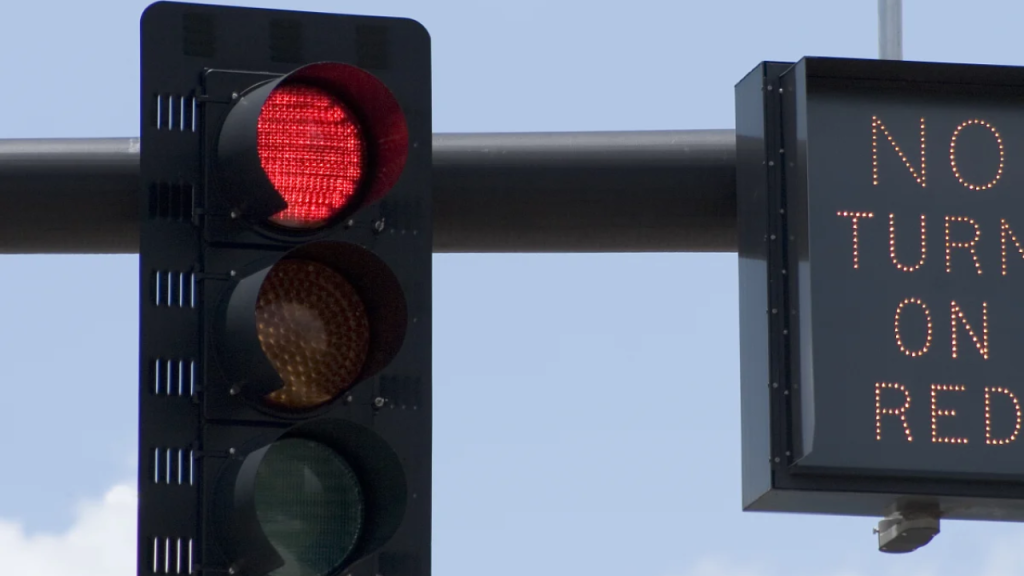
Florida drivers are familiar with the many rules of the road, but one rule that often causes confusion is the right turn on red. While turning right at a red light is generally allowed in Florida, several conditions and restrictions apply that every driver must understand to avoid fines and ensure safety.
When Is Right Turn on Red Allowed?
Under Florida traffic law, a right turn on a red traffic light is allowed unless there is a specific sign or signal prohibiting it. Drivers must first come to a complete stop at the stop line or before entering the crosswalk or intersection. Only after stopping and ensuring the path is clear can they make a right turn.
The key steps for legally making a right turn on red are:
- Complete Stop: Bring your vehicle to a full and complete stop before turning.
- Yield to Pedestrians and Other Vehicles: Check for pedestrians crossing and any oncoming traffic that has the right of way.
- Observe Traffic Signs: Look carefully for any “No Turn on Red” signs. These signs indicate that a right turn on red is not allowed at that intersection.
This rule helps ensure that drivers do not disrupt pedestrian crossings or interfere with other traffic flows.
When Is Right Turn on Red Prohibited?
Certain situations in Florida prohibit right turns on red lights, and it’s critical to recognize these to stay safe and legal.
- “No Turn on Red” Signs: These are posted at intersections where turning on red is not permitted. These signs are enforceable by law, and ignoring them can lead to fines.
- Red Arrow Signals: A solid red arrow pointing right means you must wait until the light turns green before making a turn. Unlike a standard red light, this signal explicitly prohibits turning.
- Limited Visibility: Even if no signs prohibit turning, drivers should avoid making a right turn on red if their view is obstructed or if they cannot clearly see oncoming traffic or pedestrians.
Why Safety Matters When Turning Right on Red
Right turns on red can be convenient and help keep traffic moving, but they also pose risks if not done correctly. Pedestrians are especially vulnerable, and intersections are common places for accidents.
Drivers should always:
- Use their turn signals early to alert others.
- Slow down and carefully scan for pedestrians or vehicles that may be crossing.
- Avoid rushing the turn even if the light is red.
Some Florida cities may have additional local rules or signage that affect right turn on red behavior. Being aware of these nuances can prevent confusion and keep drivers safe.

Penalties for Violating Right Turn on Red Laws in Florida
Failing to follow Florida’s right turn on red laws can result in fines and points added to your driver’s license. For example:
- Turning without stopping or ignoring “No Turn on Red” signs can lead to fines around $158.
- Drivers may also receive 3 points on their driving record for such violations.
- Accumulating 12 points within 12 months can result in a 30-day suspension of your driver’s license.
It is essential to understand that these penalties are not just about avoiding fines but about keeping all road users safe.
Additional Resources
For official guidance on Florida traffic laws and rules, including right turns on red, the Florida Department of Highway Safety and Motor Vehicles (FLHSMV) website is the best resource. It offers detailed information about traffic rules, driver safety, and licensing:
Florida Department of Highway Safety and Motor Vehicles
Right turns on red can save you time and help with traffic flow, but only when done safely and legally. Florida drivers must always stop fully, yield to pedestrians and other vehicles, and obey any signs or signals. Understanding when right turns on red are permitted — and when they are not — can help you avoid costly fines and keep Florida roads safer for everyone.
Remember, the convenience of a quick right turn is never worth risking a ticket or an accident. Stay alert, follow the rules, and keep yourself and others safe on the road.
